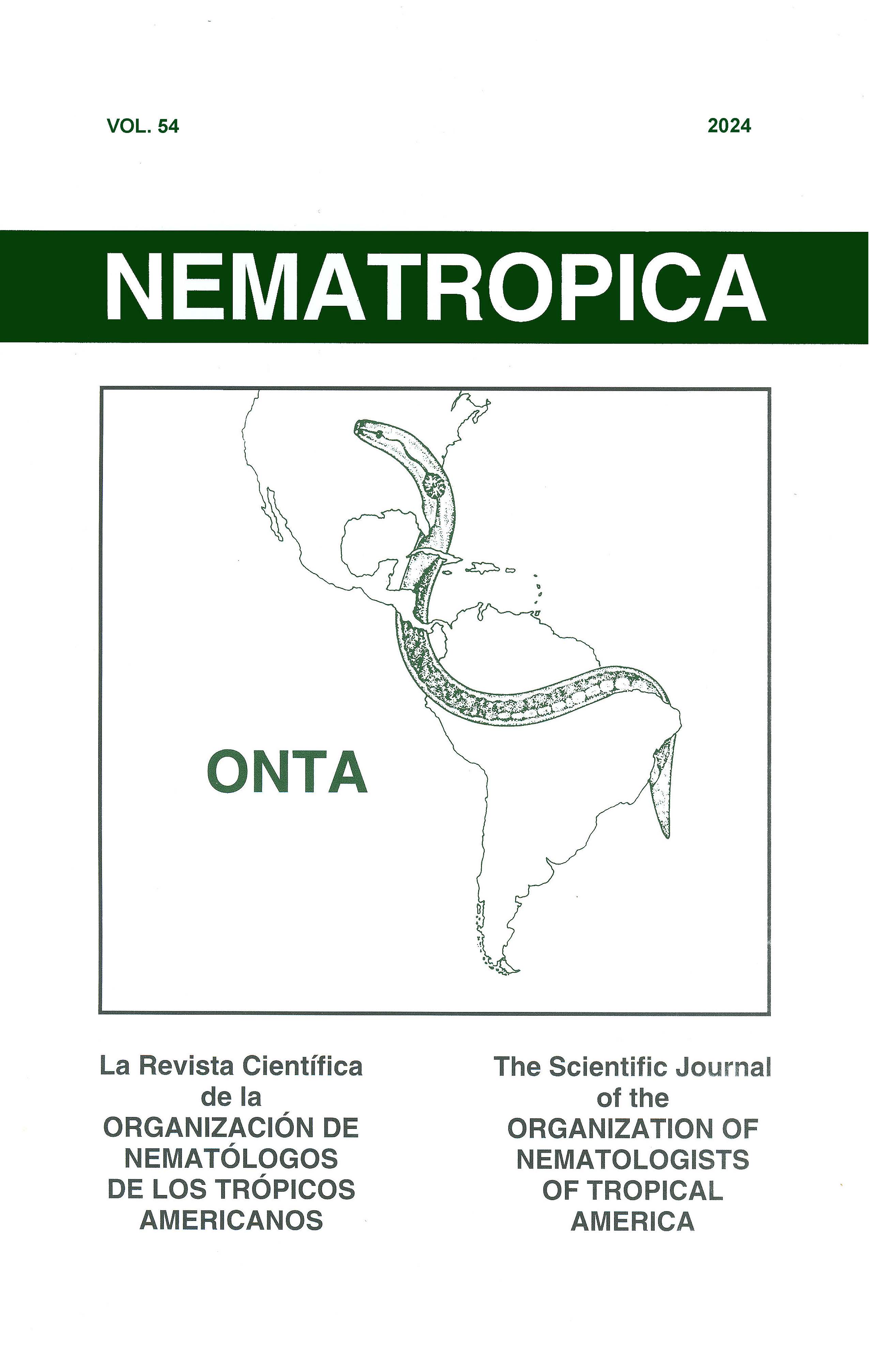THE INFLUENCE OF IRRIGATION, CROP ROTATION, AND FLUOPYRAM NEMATICIDE ON PEANUT YIELD AND THE NEMATODE COMMUNITY
Resumen
Peanut (Arachis hypogaea) is an important cash crop in the southeastern United States and suffers from yield losses due to plant-parasitic nematodes. Peanut is rotated with two years of cotton (Gossypium hirsutum) or one year of cotton and two years of sod (Paspalum notatum) in conventional and sod-based crop rotation, respectively. Little is known about how three common agronomic practices – irrigation, crop rotation, and fluopyram nematicide application – collectively influence peanut yield and nematode community structure. Therefore, objectives of this research were to determine effects of irrigation (with or without), crop rotation (conventional or sod-based peanut), and fluopyram nematicide application (with or without) on various nematode feeding groups, ecological indices, and peanut yield. Soil samples were collected before planting, at midseason, and at harvest in 2018-2019 at a long-term research site in Quincy, FL, USA. Free-living and ring nematodes (Mesocriconema ornatum) were extracted from a subsample using sucrose-centrifugation and nematode ecological indices (structure, maturity, channel, enrichment, and basal) were calculated. Overall, ring nematode population densities were greater in sod-based peanut than conventional peanut. Conventional peanut had greater yield than sod-based peanut plots. Fluopyram nematicide application did not improve peanut yield compared to untreated plots. We observed consistent trends with sod-based peanut increasing fungivores relative to conventional peanut. Yet, other nematode feeding groups and ecological indices were not consistently impacted by our factors. Therefore, nematode ecology based on feeding groups was not heavily influenced by irrigation, crop rotation, or fluopyram nematicide in this research.

